Visually portray each of the unique types of stakeholders who may be going through your program.
Another key element of your learning strategy is answering: Who is our learner?
First - let us say that if you stop for even 5 minutes to think about this, you’ll already be on the right track. We don’t need to overcomplicate this process of empathy. The problem for many organizations is that they don’t stop to think about this. They just dive right into ‘making training.’
But there are tools that can help you do this thoughtfully.
Our favorite at Bright is called a Learning Persona. This is a visual way to portray each of the unique types of stakeholders who may be going through your program. This is actually the SAME type of tool that marketers use when they’re designing products or services. The idea is that if you can articulate enough about your stakeholder, and put yourself in their shoes, you’ll make better decisions.
Here are some common Learning Persona considerations:
- Name:
- Age:
- Current Skills:
- Location:
- Day in the Life:
- Loves/Bugs:
- Count:
We’ve provided a couple sample persona templates for you linked at the bottom of the article that you can download and tailor however you see fit. We hope they help you and your team think about your own learner populations!
As you begin to use them, I want to share a few quick additional tips or caveats based on mistakes I’ve seen learning teams make:
- First, don’t overdo it. There is such a thing as an overly academic learning persona. Or even too many learning personas! I recall a project I worked on at a large-scale consulting firm many years ago where we made 10 of the most beautiful learning personas you ever saw. Segmented by generation, technology proficiency, personality. You name it. We analyzed the type of people/roles/backgrounds that we’d engage in a 1,000 person organization. The trouble was that we didn’t have the time OR money to act on 90% of the ideas we had. The point of using learning personas isn’t to show how smart you are. It’s to optimize the program you design. So as a sanity check when you’re creating these, pause every once in a while to make sure you can act on it.
- Second, start with role but don’t limit yourself to formal HR roles. It’s common when starting a new set of learning personas to have one for each of the different types of roles in your organization. But - particularly for large organizations - you may want to break down personas a littler deeper. For example, if you have 5,000 associates across the US in a particular role, you may want to have 2-3 personas to acknowledge the challenges of younger or older associates; tech savvy vs not; whatever the appropriate lens is that could change the way you design.
- Third, revisit them. Again learning personas aren’t just for fun. Come back to them 2-3 times per year as your program evolves as an exercise in empathy to remember that your learners are people too! Discussing learning personas with leaders is a great way to help bring objectivity to the decisions you’re making together about how best to invest in your team.
